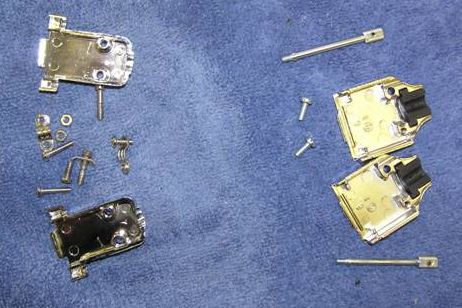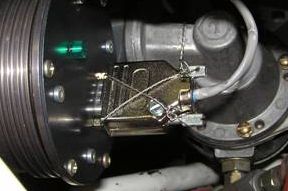15 minutes into a leisurely 50
minute return flight from across the border (WI/IL border) I experienced what
felt like a sledge hammer whacking the plane – A big misfire of old reliable up
front. Not to worry, once or twice
a year these things happen at night, over water or in the mountains – Slug of
water (I did top off in WI)? Fiberglass shard going thru an injector? Or just a
mysterious happenstance?
Now that I am alert, another
occurs, then another, etc. About 15
random times over the remainder of the trip – With my hand poised over the
“nearest airport” function, noting that at 5500 feet I had maybe an 8 mile
engine out range (there is a high airport density in this part of the country),
I repeatedly ran thru the engine/ignition instrumentation looking for anomalies
– none were noticed. I did reduce
power somewhat and the misfires seemed less “noisy.”
The investigation began the next
day after things cooled down, checking the obvious things first. Let’s see, no water in the fuel so the
cowl was pulled and the experimental injector air supply system was checked
for blockages. Then, the LSE timing
sensors (mag accessory gear driven) were examined and the right d-sub connecter
was LOOSE while the left one was not tight.
Hmmmmm……………………..
In a long-ago conversation with
Klaus, I noted that these connectors had loosened up after just a few test
flights and he had mentioned that some users had put a tie-wrap around the
connector to keep the hold-together screws from backing out and that the exiting
wire had to be supported to something that shook with the engine. So I did that. At OSH I talked again with Klaus and suggested
that if the Hall sensors had pig tails the connectors could be isolated from
vibration. He said “Yes, you can do
that.” There was no hint he would
ever change. Note that the LASAR
system uses very nice locking connectors at the end of a 10” pig tail.
Anyway, I was sure that the loose
connections I found could cause bad timing information and subsequent
misfires. I was not going to have
that happen again – especially since I had only 20 hours since these connections
were last secured with the tie wrap scheme.
So, I bought replacement metal
connector covers (Mouser Electronics) with stemmed hold downs that I drilled for
safety wire.

The one on the left is the LSE
supplied metalized plastic cover with wee hold down screws. When I disassembled it, even the cable
relief clamp had come loose. The
metal one on the right has different sized hard rubber relief clamps and, also
note the drilled thumb screws. Medium strength thread lock
(blue) was applied to the screws that hold the case halves together. Mouser's write up indicated that
metalized plastic covers had a 30 Db noise rejection rating whilst the metal
ones had a 70 Db rating, another positive.
Here’s what the left one it
looks like with the thumbscrews safety wired in place:

Yesterday, a 1 hour test flight
went smoothly – no hiccups, no sledge hammers.
Scott Krueger
AKA Grayhawk
Lancair N92EX IO320 SB 89/96
Aurora, IL
(KARR)